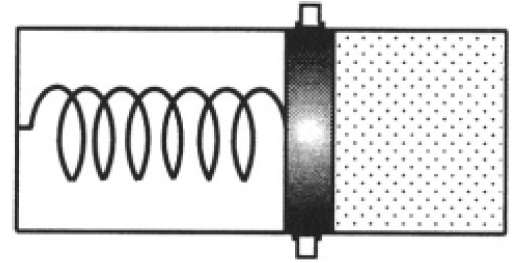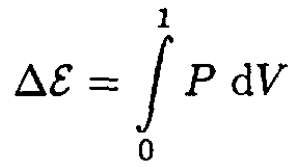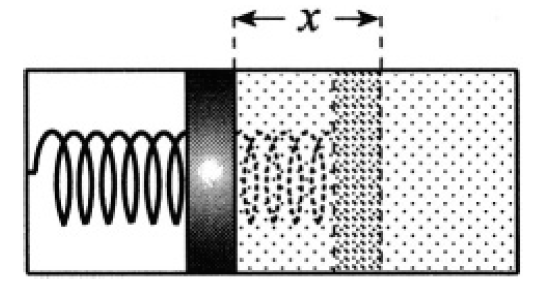


 الفيزياء الكلاسيكية
الفيزياء الكلاسيكية
 الكهربائية والمغناطيسية
الكهربائية والمغناطيسية
 علم البصريات
علم البصريات
 الفيزياء الحديثة
الفيزياء الحديثة
 النظرية النسبية
النظرية النسبية
 الفيزياء النووية
الفيزياء النووية
 فيزياء الحالة الصلبة
فيزياء الحالة الصلبة
 الليزر
الليزر
 علم الفلك
علم الفلك
 المجموعة الشمسية
المجموعة الشمسية
 الطاقة البديلة
الطاقة البديلة
 الفيزياء والعلوم الأخرى
الفيزياء والعلوم الأخرى
 مواضيع عامة في الفيزياء
مواضيع عامة في الفيزياء|
Read More
Date: 29-8-2016
Date: 19-8-2016
Date: 26-8-2016
|
Spring Cylinder
One part of a cylinder is filled with one mole of a monatomic ideal gas at a pressure of 1 atm and temperature of 300 K. A massless piston separates the gas from the other section of the cylinder which is evacuated but has a spring at equilibrium extension attached to it and to the opposite wall of the cylinder. The cylinder is thermally insulated from the rest of the world, and the piston is fixed to the cylinder initially and then released (see Figure 1.1). After reaching equilibrium, the volume occupied by the gas is double the original. Neglecting the thermal capacities of the cylinder, piston, and spring, find the temperature and pressure of the gas.

Figure 1.1
SOLUTION
For a thermally insulated system (no heat transfer), the energy change ∆ε is given by
 (1)
(1)

Figure 1.2
where 0 and 1 correspond to the initial and final equilibrium states of the system, with sets of parameters T0, P0, V0 and T1, P1, V1 respectively. In this case, the gas is expanding, therefore some positive work is done by the gas, which indicates that the energy change is negative, and the temperature decreases. ∆ε for an ideal gas depends only on the change in temperature:
 (2)
(2)
Where Cv is the heat capacity of one mole of the gas at constant volume (for a monatomic gas Cv = 3R/2). The work done by the gas goes into compressing the spring:
 (3)
(3)
where K is the spring constant and x is the change of the piston position (see Figure 1.2). On the other hand, when equilibrium is reached, the compression force of the spring
 (4)
(4)
where A is the cross section of the piston. So
 (5)
(5)
where we used the ideal gas law for one mole of gas. Substituting (5) into (3), we have
 (6)
(6)
Notice that Ax is the volume change of the gas:
 (7)
(7)
Therefore,
 (8)
(8)
Substituting (8) and (2) into (3), we obtain
 (9)
(9)
and
 (10)
(10)
The temperature indeed has decreased. As for the pressure, we have for the initial state
 (11)
(11)
Now V1 = 2V0, so
 (12)
(12)
and




|
|
|
|
دخلت غرفة فنسيت ماذا تريد من داخلها.. خبير يفسر الحالة
|
|
|
|
|
|
|
ثورة طبية.. ابتكار أصغر جهاز لتنظيم ضربات القلب في العالم
|
|
|
|
|
|
|
سماحة السيد الصافي يؤكد ضرورة تعريف المجتمعات بأهمية مبادئ أهل البيت (عليهم السلام) في إيجاد حلول للمشاكل الاجتماعية
|
|
|